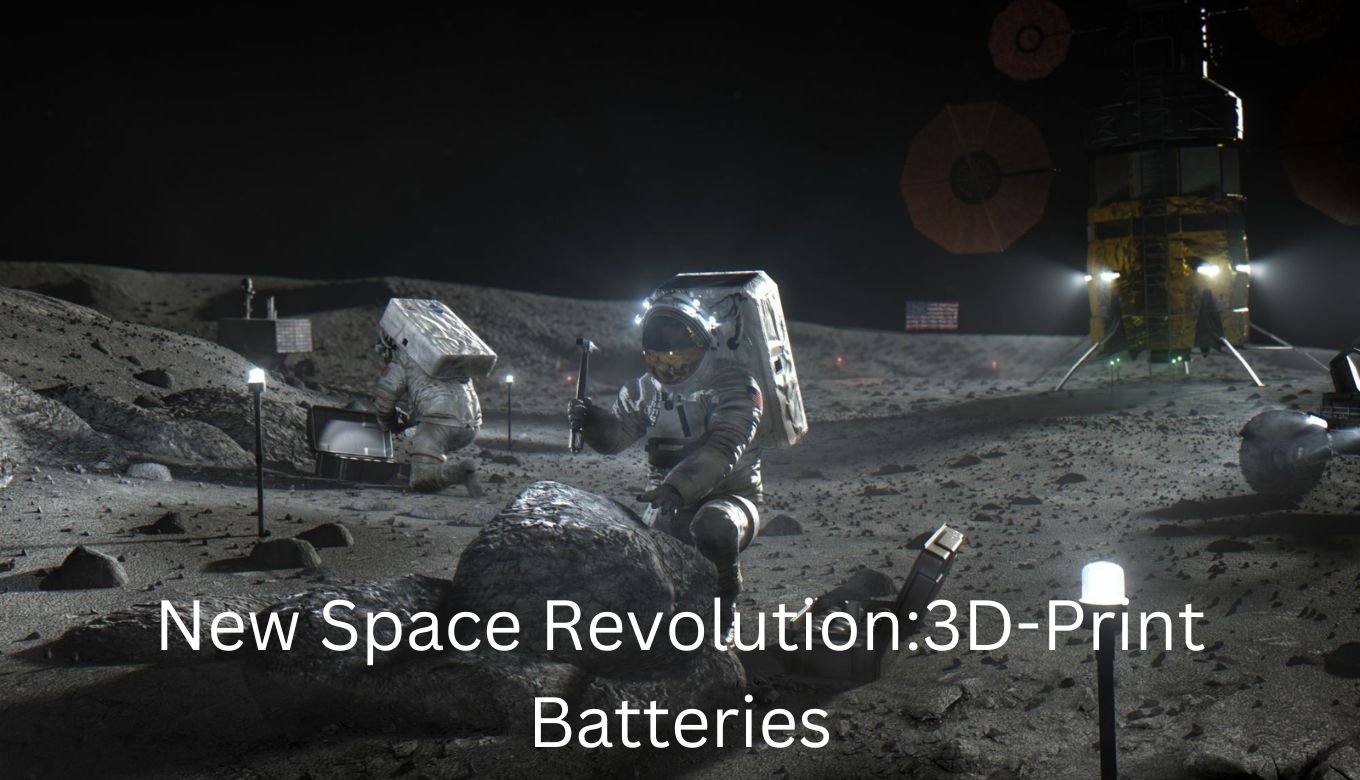3D-Print batteries will be the future of space exploration. The current lithium-ion batteries used in the International Space station are heavy and there is the risk of thermal runaway associated with it.
Now the team of NASA and the University of Texas El Paso (UTEP) are exploring the idea of creating 3D print batteries, when astronauts will finally reach the Lunar and Mars.
In space taking heavy loads of battery costs too much, so choosing an option 3D print battery for space exploration is the best option.
NASA and Universities Team Will Create 3D-Print Batteries for Their Lunar and Mars Mission

NASA, the University of Texas El Paso (UTEP), and Youngstown State University teamed up in a $ 2.5 million project to build 3D-print batteries for Space exploration using materials from planets like Mars and Moon.
NASA and UTEP taking a step for adapting the 3D printing process for space exploration. In 3D-print batteries, they can print the battery in any shape, which can be fit into any equipment and save space.
UTEP joins NASA on producing 3D printed batteries for space travel. https://t.co/2277c3Eg4z
— KTSM 9 News (@KTSMtv) March 24, 2023
What Kind of 3D-Print Process Use in Space Exploration?
Team of NASA and the University of Texas EL Paso (UTEP) building two types of the 3D print process.
First – The first 3D printing process is “material extrusion”. In this process, the battery shape is printed out of the printer in its final form.

Material Extrusion: 3D Print Battery Method
Second – The second process uses a chemical substance or process called “vat photopolymerization” (VPP).

VAT Photopolymerization
In this printing process, the material we used is a vat of liquid photopolymer resin. The machine then uses this material to construct an object layer by layer.
The VPP 3D-print batteries would allow astronauts in lunar missions to create shape-fitting batteries. They are used in equipment such as -: spacecraft, robots, portable power units, and large-scale long-term power systems.
Also Read: Space: Researchers Discover Origin of the Earth’s Volatile Chemicals
How are 3D-Print Batteries Created?

Astronauts can create 3D-print batteries in space by using the local resources of the planets.
They will use local regolith (a layer of rocks and dust at the surface of the planets) to print the batteries in whatever shape they needed.

Lunar dust or regolith
Eric MacDonald, professor of aerospace and mechanical engineering and associate dean in the UTEP college of engineering said “UTEP is a seminal partner in this NASA-led project with our long and deep heritage in additive manufacturing. UTEP’s reputation in 3D printing, material science, and our state-of-the-art facilities were important factors in convincing our NASA partners to pursue this potentially transformative research – for space exploration but for terrestrial applications of batteries as well.”
You can learn about the process of 3D-print batteries in this below image -:

Lithium-Ion Vs Sodium-Ion Batteries Used in Space Exploration

In the International Space Station astronauts use the Lithium-ion battery they brought up from the earth.
But on Moon or Mars, they will be unable to use Li-ion batteries because the resources of Li-ion batteries are rare on Mars and Moon.
But sodium-ion resources are available on Moon and Mars. So, NASA and UTEP teams are studying and doing research and studying sodium-ion battery chemistry and possible printing solutions.
After that, they’ll test the procedures.
NASA and UTEPs are Working on the Sodium-ion 3D-Print Batteries

The team of NASA, UTEP, and Youngstown State University will also work on the extraction of battery materials and precursors for these sodium-ion batteries from lunar and Martian regolith.
The team is already used VPP 3D printing to make composite resin feedstock for each battery component like electrodes, current collectors, and electrolytes.
UTEP and NASA’s Glenn Research Centre will electrochemically test the sodium ion 3D-printed batteries.
Alexis Maurel of the UTEP Department of Aerospace and Mechanical Engineering said that “This project with NASA is an opportunity to demonstrate UTEP’s expertise in both energy storage and 3D printing. Additive manufacturing appears as a unique approach to manufacture shape-conformable batteries to support human operations in space and on the surface of the moon or Mars, where cargo resupply is not as readily available.”
If the test will be successful for 3D-print batteries, it’ll be a revolutionary change in space technology. Astronauts will no longer depend on the thermal runaway Li-ion batteries, and they’ll choose 3D print batteries which are easily molded into any shape and will be cost-effective.
Also Read: Elon Musk Neuralink Will Going to be Implant Brain Chip



